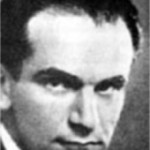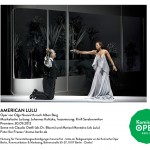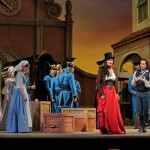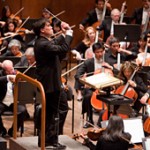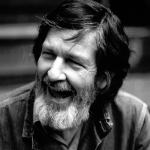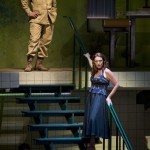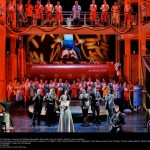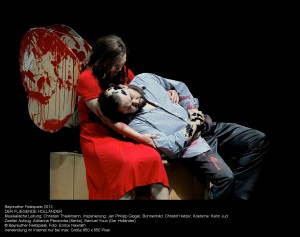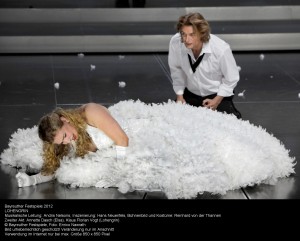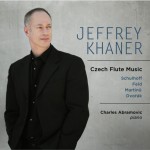Uncovering the trail of Nazis politics has nearly become a cliché in German academia and cultural life. The trend recently prompted Günter Grass, who shocked the media earlier this year with a poem in the Süddeutsche Zeitung decrying Israeli politics as a threat to world peace, that the new German philo-Semitism is really a form of anti-Semitism. That the literary figure was capable of making both these statements public illustrates how complex the issue has become. Yet beneath all the dialogue and dissertations about persecuted artists, the hardest part may be letting what remains of their work to speak for itself.
Musica reanimata, a moderated concert series founded in 1990 with the mission of reintegrating the works of persecuted composers into the canon, occupies a modest but not inconsequential part of this process. The first concert of the season on October 18, held in the small, café-like ‘music club’ of the Konzerthaus and hosted by the radio station Deutschlandfunk, was dedicated to Norbert von Hannenheim, a Transylvanian born composer who was briefly part of Arnold Schönberg’s Berlin school. He perished of heart failure in an asylum, most likely in the German capital, the year World War Two came to an end.
Hannenheim is known on the continent as the only student to have openly contradicted Schönberg during lessons, refusing to limit himself to 12-tone rows and quickly expanding his palette to 23 tones. Of the over 200 works he wrote in a relatively short period of time, 45 are known to have survived. Musicologists are left to speculate about their chronology. A collection of four songs to poetry by Rainer Maria Rilke ranged from the slow moving, tonal harmonies of the bacarolle-inspired Venedig (Venice), while Todeserfahrung (The Experience of Death) featured angst-ridden, expressionist dissonances that evoked walking out to the edge of a forest at night.
As the hosts Albert Breier and Gottfried Eberle explained in onstage conversation, Hannenheim suffered from a nervous breakdown and other mental and physical problems before most likely descending into a schizophrenic state which they attributed to Nazi politics. The uncontrolled outbursts that emerged from the abrasive yet mocking polyrhythmics of his Suite for Viola and Piano, evoking a waltz in Mahlerian fashion, or the morbid chorale in the second movement of his Sixth Piano Sonata do little to mask a deep internal conflict that would mostly likely be identified as bipolar disorder today. But Hannenheim’s political references are more than clear, such as in the puncturing chords of the Russian-inspired march in the last movement of his Third Piano Sonata.
Pianist Moritz Ernst was able to convey the music’s unpredictable range of emotion while satisfying its structural and technical demands. While he often devolved into banging the Steinway Grand, it is hard to imagine not doing so given Hannenheim’s wrenching effect. The Czech soprano Irena Troupovà struggled with the high range and tremendous breath control of his unruly melodies, sometimes falling into flat intonation, but found her stride in the orderly serial patterns of Vorgefühl, to a poem by Rilke. The violist Jean-Claude Velin engaged in lively dialogue with Ernst in the Suite for Viola and Piano, matching the pianist’s capacity for pushing himself to the edge of emotion with abrasive yet ironic textures. No amount of ink may do a story like that of Hannenheim justice, but his music is a living document of just how excruciating the time was.
The Berliners do Vivaldi
While many orchestras in the western world face a crisis of financial and artistic values, the Berlin Philharmonic stands as a model of both unbending economic success and artistic versatility. With a fully-fledged Digital Concert Hall made possible by the Deutsche Bank, an extensive educational outreach program, a new “Late Night” contemporary music program, its own magazine, collaborations with artists such as Peter Sellars, and a chamber music series, this orchestra seems to know no bounds. Last week, the Italian harpsichordist and early music conductor Andrea Marcon, making his debut at the Philharmonie, led a chamber ensemble of Philharmonic musicians alongside the RIAS Chamber Chorus and a selection of soloists in an all-Vivaldi program (seen October 12).
Vivaldi wrote over 500 concerti which were not only influential on veteran composers of the time such as Albinoni but found strong devotees in Germany, not least with J.S. Bach, who found particular inspiration in their ritornello (refrain) structure. Perhaps less known is that Vivaldi, anointed as a priest shortly before becoming violin master at the Pio Ospedale della Pietà in 1703, which provided care to abandoned young girls but also specialized in their musical training, wrote some of his most well-known works during his 37-year-old cloistered existence, including Le quattro Stagioni (The Four Seasons).
While most of his concerti are written for solo violinist, flute, oboe, bassoon, viola and recorder also emerge. Emmanuel Pahud, a principal with the Philharmonic, made a single appearance in the Concerto in G-minor “La Notte” (RV 439), in which the flute takes the reins on an insomniac landscape, launching from a dreamy Largo into a furious Presto and continuing to alternate brief slow and fast episodes. The Swiss flutist’s technical polish through rapid runs and trills proved unblemished, but he mostly left an impression with the delicacy and cantabile quality of the melodies he delivered over restrained continuo and strings. Marcon drew authentic accents and incisive playing from the ensemble.
The concert also featured two concerti commissioned under the Saxon King August the Great which assign prominence to winds; as the program notes explain, perhaps with deference to a precept of the North German flutist Johann Joachim Quantz for regular exchange between instruments. Oboist Albrecht Mayer joined solo violinist of the evening Andreas Buschatz, a back-up concert master with the Philharmonic, as well as two recorder players for the Concerto in G-minor “per Sua Altezza Reale di Sassonia” (RV 576). The stark unisono melodies and chiselled wind solos suited the players better than the opening Concerto grosso in D-Major (RV 562a), in which the lush string textures were at times a bit too headstrong. Buschatz also failed to bring sufficient expressivity to his cadenza, in which rapid, thorny harmonics emerged clearly but with a slightly squeaky quality.
Nevertheless, Marcon and the players remained a musically compelling, well-knit ensemble throughout the evening, particularly in the Concerto in F-Major RV 569, where Buschatz brought sensitive phrasing to the lamenting Grave section. The concert ended with the Gloria in D-Major (RV 589), most likely written during a short two-year period (1713-15) during which Vivaldi wrote explicitly religious music for the Pietà. Swedish soprano Lisa Larsson and Russian mezzo Marina Prudenskaja struck a fine balance in the “Laudamus te” despite a large timbral discrepancy between the two singers.
Larsson’s crystal clear voice sounded a bit too eager to convey a sense of virtue in the subsequent “Domine Deus” alongside elegant solo melodies from Mayer, while Prudenskaja warmed up for a dusky, visceral delivery of her “Miserere nobis” solo of the tenth movement. The RIAS singers maintained a quiet air of piety as they followed Marcon’s understated gestures to breathe in leisure with the chamber orchestra. Long applause followed, with bouquets for the conductor and singers which were passed around onstage in high spirits.
Next week: Andris Nelsons conducts the Berliners in a program of Britten, Debussy, Ravel and Widmann featuring Christian Tetzlaff as soloist.
